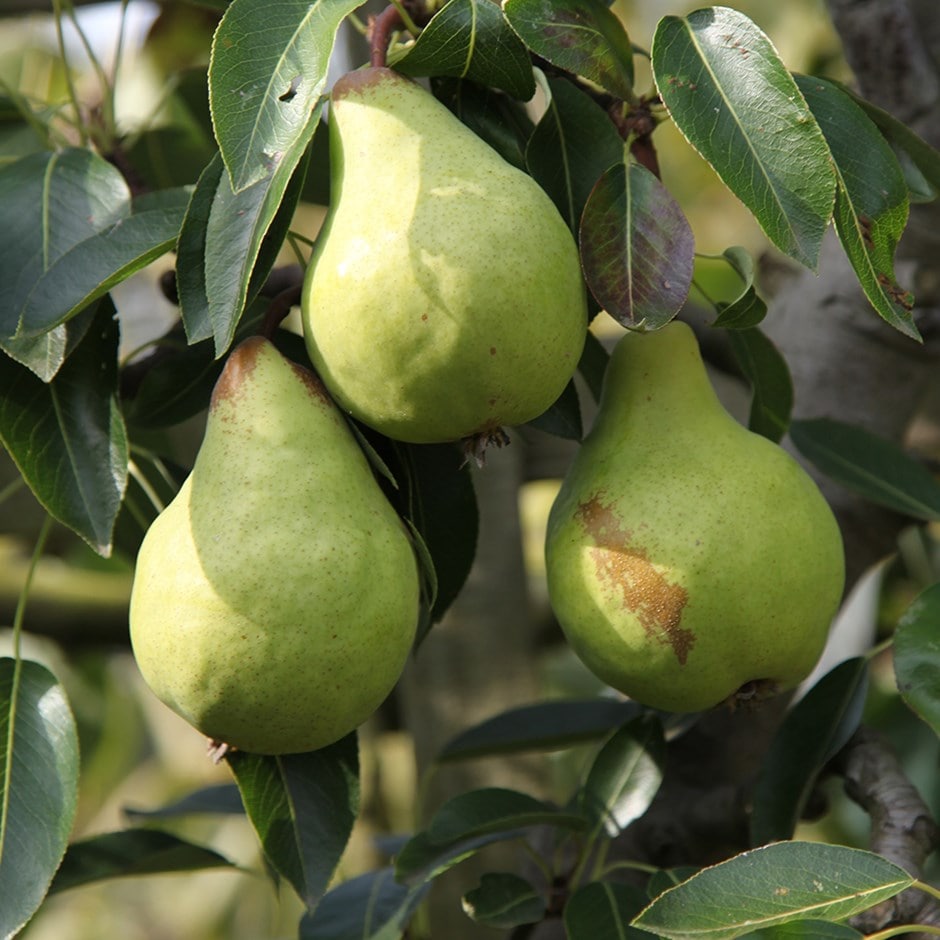pear 'Packhams Triumph'
pear
This plant is deciduous so it will lose all its leaves in autumn, then fresh new foliage appears again each spring.
- Position: full sun or partial shade
- Soil: moderately fertile, moist but well-drained soil
- Rate of growth: average
- Flowering period: April
- Hardiness: fully hardy
For sublime taste and reliable harvests, look no further than 'Packham's Triumph'. This esteemed pear delivers bumper crops of delicious sweet fruit. The pears ripen from green to golden-yellow, developing their signature musky aroma and luscious flavour when left to tree-ripen as long as possible into late October. Though the smooth-skinned pears are only medium in size, it crops so heavily that thinning young fruit often improves size and quality. For best results, grow 'Packham's Triumph' in warm, sheltered sites to avoid blossom damage.
Pollination information: This pear requires a pollinating partner from another variety of pear nearby in order to set fruit. Ideally this should come from the same pollination group 3, however it is possible to use one from group 2 or 4 as well.
Pollination information: This pear requires a pollinating partner from another variety of pear nearby in order to set fruit. Ideally this should come from the same pollination group 3, however it is possible to use one from group 2 or 4 as well.
When planting your pear tree, prepare a hole up to three times the diameter of its root system. Fork over the base of the pit in readiness, incorporating plenty of organic matter into the backfill and planting hole. Avoiding frozen and waterlogged soil, trees should be planted out as they arrive. If you've ordered a bare root tree, soak the roots in a bucket of water for half an hour prior to planting, or if this is not possible, they can be heeled in temporarily, covering their roots with soil, or potted up. In exposed positions, stake firmly and keep the base weed-free. Apply a balanced fertiliser in early spring to support growth and fruiting and provide regular watering during hot, dry spells. The main winter prune, avoiding frosty conditions, involves removing dead, dying, and diseased wood to create an open crown. Additionally, reduce leaders and laterals by a third to establish an airy structure without crisscrossing branches. In August, summer prune by shortening side shoots longer than 20cm (8”) back to three leaves, promoting fruit ripening and encouraging more fruit buds. Always ensure that the growth you trim feels firm to the touch. Pears naturally shed a small quantity of the developing fruits in mid summer. After this has occurred, thin out the remaining pears, leaving one pear per cluster.

